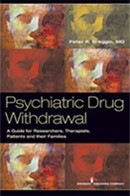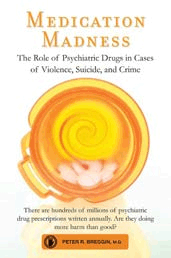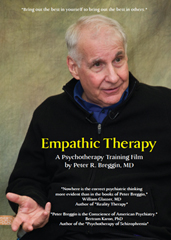Breaking News and Information – August 2019
Current News
★ Explaining depression biologically increases prognostic pessimism
Ian’s thoughts: … increases prognostic pessimism and drug-company profits… you’ll need these drugs for the rest of your biologically broken life. Drug makers conspired to worsen the opioid crisis. They have blood on their hands
School-based mindfulness leads to stress reduction, study finds
The scary way antidepressants could affect your sleep
One-year-old prescribed antidepressants by NHS in Scotland
Expert warns lack of sleep changes DNA behavior, cause weight gain, high blood pressure
Today’s teens are anxious, and social media can play a role
|
5 natural ways to strengthen your mind
Can you actually learn how to be happier?
Lavender oil significantly improves anxiety-induced insomnia
What smartphones are doing to your teenager’s mental health
Ian’s thoughts: However, the preponderance of studies favor that social media may have a negative impact on mental health. Examples can be found in news reports below. Study says fast food may lead to depression in teens
|
|
Psychosocial Approaches to Deeply Disturbed Persons, by Peter R Breggin, MD |
The Dr. Peter Breggin Show – Open Mic – August 28, 2019
Are stimulants safe for children?
Is depression drug lauded by Trump oversold?
Teen birth control use linked to depression risk in adulthood
Does a broader concept of harm make us weaker?
|
|
|
Is your weight aging your brain?
Can ecotherapy boost your mental health? Spending time with nature comes with so many benefits
How to sleep: Three signs your mood is affecting your sleep – here’s how to treat it
|
It Was Easier to Be Skinny in the ’80s
★ Antidepressant withdrawal and changing scientific consensus
Psychiatry is slowly catching up with what Dr Breggin has been reporting for decades. Here’s the study reported above: The study: Antidepressant withdrawal – the tide is finally turning
Seoul’s over-65s disco ‘like medicine’ for seniors
|
|
|
Risk of depressive relapse three times higher after previous antidepressant use
Temple stay beneficial to mental health, SNUH says
It’s easier to regulate your emotions with this type of self-talk
Peer-pressure can encourage patience and healthy eating
|
Monarch eTNS Inspires “Stop the Psychiatric Abuse of Children!” (SPAC!)
The Dr. Peter Breggin Hour – 08/21/19
How Exercise Benefits Overweight and Obese Individuals’ Brains
Swiss fact: Ritalin was invented in Switzerland
How exercise can help with first episode psychosis
Flower power: how they improve emotional well-being
Parkinson’s disease: This relaxation activity can help alleviate symptoms
|
★ Science again upholds the notion that love is good for us
Further supporting Dr. Breggin’s recent essays How Love Can Reform our Lives and Are Emotional Disorders Really Disorders of Love? Antipsychotics cause short-term somatic serious adverse events
Poor air quality linked to bipolar disorder, depression
Montreal researcher says new study suggests autism overdiagnosed
|
|
|
Science says people like you more than you know
What 31,000+ personality tests say about differences between men and women
What’s the upside of feeling insecure?
|
Alert 115: Inner Fire, a Drug-Free Healing Community on Dr. Breggin’s Radio Show
Last week on The Dr. Peter Breggin Hour – 08/14/19
Brain aberration associated with the “therapeutic effect” of ECT
Grape compound ‘may be alternative to drugs’ in fight against depression
Stimulants impair sleep, working memory in healthy young adults
Ian’s thoughts: those findings present a perfect demonstration of Dr. Breggin’s thesis of intoxication anosognosia (aka, medication spellbinding). People taking psychoactive drugs like stimulants can easily believe they are doing better, performing optimally, but outside their drug-induced perceptions they are actually not doing better. Instead, they are under the drug’s self-deceiving ‘spell’, they are spellbound! So self-reports of improvement among psychiatric-drug users ought be taken with a grain of salt. |
Psychosocial approaches to schizophrenia with limited antipsychotic use
Adding Prozac to cognitive behavioral therapy for youth added no benefit
Consumer Reports: Medications that make you sensitive to the sun
|
Effects of seclusion and restraint in adult psychiatry: a systematic review
No evidence for brain asymmetry in depression
Study links fluoridated water during pregnancy to lower IQs
For coaches, anger more effective than positivity when it comes to halftime speeches
|
|
Psychosocial Approaches to Deeply Disturbed Persons, by Peter R Breggin, MD |
ADHD medication may affect brain development in children
★ Systematic review: The role of exercise in preventing and treating depression
Complex effects of lifetime cannabis use on schizophrenia
|
Are dogs or cats better at curing loneliness?
Moral Masculinity: Testosterone May Actually Make People More Sensitive To Moral Norms
Dayton gunman was on cocaine, antidepressants and alcohol, coroner says
|
DNA test for antidepressants raises FDA doubts; myriad drops
Electroconvulsive therapy given without proper authorisation at Royal Darwin Hospital
How overeating changes the brain
Study: Sharing your dreams with others boosts emotional intelligence
|
Alert 114: The History of Psychiatry on Dr. Breggin’s Radio Show
★ ADHD drugs alter structure of children’s brains, scans reveal
★ Popular ADHD drugs Ritalin, Concerta may change structure of children’s brains, study finds
Here’s the press release about this study from the Radiological Society, the publisher. Ian’s thoughts: What’s important to understand is that this is the first study to look at the brains of medication-naïve subjects first, then initiate methylphenidate (Ritalin), and then look at the same brains after 4 months of use. So this is the first Ritalin study in history to be able to definitively identify Ritalin as a cause of changes to brain structure. To think, after so many years on the market this was finally done, and the results are troubling, to say the least. To really learn, our children need the power of play
Candid questions about biological psychiatry
Study: social media use may harm teens’ mental health by disrupting positive activities
|
Craig Wiener – ADHD: A Return to Psychology
Dr. Wiener also appeared on The Dr. Peter Breggin Hour, August 13, 2012. Time your showers and baths for better sleep
Social contact during midlife appears to lower dementia risk
Prescription drug misuse common in high schoolers
|
|
Psychosocial Approaches to Deeply Disturbed Persons, by Peter R Breggin, MD |
Physical exercise is an important preventative medicine for depression
Study suggests pathological gaming is a symptom of problems, not a unique mental disease
Antidepressants and the national suicide epidemic
Disturbing rise in teens needing glasses blamed on excessive screen time
What TV binge-watching does to your brain, and how to counter it
|
|
|
Girl became obsessed with death after starting Prozac | A Current Affair
NY governor suggests creating a database of people with mental illness
Does Vitamin D supplementation reduce ADHD symptoms?
★ Mindfulness-based cognitive therapy found superior to antidepressants
Violent video games factor in violent behavior but not seen as sole cause
Staying hydrated can help your mental health, research shows
|
The Dr. Peter Breggin Show – August 7, 2019
Optimistic people sleep better, longer, study finds
New study reveals the secret to dealing with anxiety
Plant-Based Diet Linked to Lower Rates of All-Cause Mortality, Cardiovascular Disease
|
|
Reclaiming Our Children – A Healing Plan for a Nation in Crisis, by Peter Breggin, MD |
Dark chocolate for depression? Science says ‘Yes’
‘Yoga therapy saved my sanity, and life’
Study: sub-concussive hits cause minor brain damage in college athletes
|
Alert 113: Senior Scientist on Dr. Breggin’s Radio Show
Girl, 7, who became ‘obsessed with death’ when prescribed anti-depressants
Psychology Today: TV, video games ‘encourage kids to use guns’
|
|
|
★ ‘Spin’ found in over half of clinical trial abstracts published in top psychiatry journals
Toward a critical self-reflective psychiatry: an interview with Pat Bracken
Dr. Bracken was also interviewed on The Dr. Peter Breggin Hour on July 20, 2016. Helping people come off medication – bad for business?
Adding fluoxetine to therapy not superior to therapy alone in depressed teens
Medication for depression: what are my other options?
|
|
Medication Madness – The Role of Psychiatric Drugs in Cases of Violence, Suicide and Crime |
Alert 112: WORST EVER THREAT TO OUR CHILDREN’S BRAINS
Staying Socially Active May Offset Risk of Cognitive Decline
US seniors fulfill dreams, fight depression with virtual reality
Gardening to Prevent Loneliness Ranks Among Tips for Better Aging
|
Where Does It End? New ‘Monarch’ Brain Device Approved for ADHD
Missouri’s foster kids can no longer be doped up thanks to a new legal settlement
Cardiovascular Risk Profile Associated With Antipsychotic Use in Schizophrenia
TOOTH TALK: Medications’ effects on oral health
Drugs for Parkinson’s, depression can raise dementia risk by 50%
|
How much does alcohol harm people besides the drinker?
Study touts psychotherapy as first-line treatment for youth with depression
Digital games may beat mindfulness apps at relieving stress, new study shows
|
|
Psychosocial Approaches to Deeply Disturbed Persons, by Peter R Breggin, MD |
The Dr. Peter Breggin Hour – Open Mic – 07/31/19
Want to be happier? Live near water, research shows
Psychiatric diagnosis ‘scientifically meaningless’
|
|
|
★ Psychotherapy should be first option to treat depression in young people, study says
Some medications can make sun-seekers more susceptible to heat, sunburn, dehyradation
Mindfulness-based cognitive therapy may help youth with anxiety disorders
The science and psychology of why people are happy in their senior years
Brains work in sync during music therapy
Half of young people with ADHD receive antipsychotics without proper indication
|
|
|
The Dr. Peter Breggin Hour – July 24, 2019
Acetylcholinesterase inhibitors may reduce psychiatric medications in Alzheimer disease
Babies display empathy for victims as early as 6 months
Babies understand social hierarchies, expect leaders to fix everything when someone breaks the rules
|
|
|
What we eat can affect our mental health
Busting school stress with happiness classes
‘It’s a superpower’: how walking makes us healthier, happier and brainier
|
Monarch eTNS System: FDA approves ‘mild’ shock treatment for kids with ADHD
Learning to teach mindfulness to children can help teachers reduce their own stress
Scientists use optogenetics to make mice hallucinate
Schizophrenia significantly associated with increased risk for substance abuse
Antipsychotic use in youths with ADHD is low, but still cause for concern
|
|
|
Ultra-processed diets cause excess calorie intake and weight gain
Learned Mindfulness: A novel emotional intelligence perspective
|
|
Psychosocial Approaches to Deeply Disturbed Persons, by Peter R Breggin, MD |
A Simple Guide to Understanding Psychological Research
Is this surprising drug-free remedy really stronger than a sedative?
|
Alert 110: Let’s talk about HBO’s documentary “I Love You, Now Die”
Nursing home residents turned into ‘zombies’ on antipsychotics
Facility aims to treat mental health disorders without medication
You can listen to Dr. Whitaker on The Dr. Peter Breggin Hour, appearing on the 06/04/12, 08/12/15, 04/13/16, <a style=”color: #339966;” href=”https://drpeterbreggin |




















